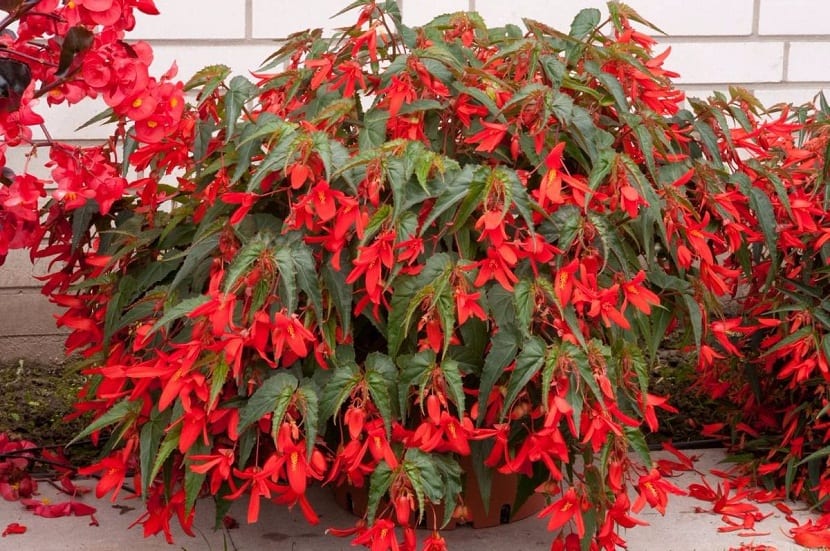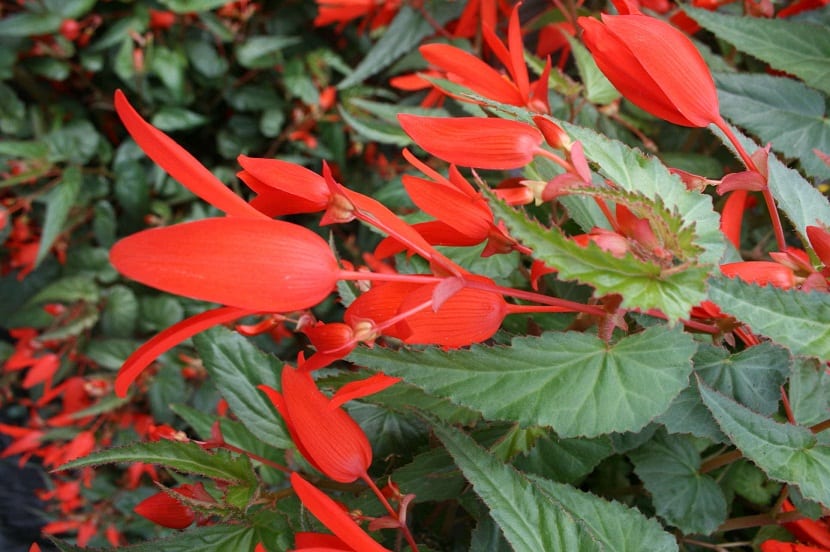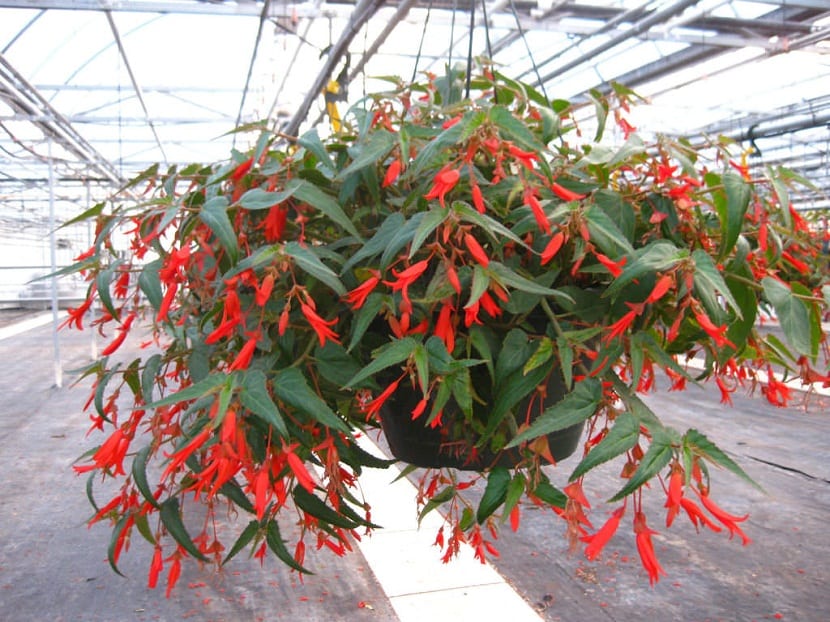
La begonia boliviensis It is a plant that definitely does not go unnoticed. Its appearance and multiple flowers adorn the spaces with their indescribable beauty. The shape of the flowers together with the striking red and white colors make the eye recreate with this plant capable of enchanting everyone. Sowing a Begonia boliviensis to decorate the garden or the interior of the home is not a complicated task. Their cares are perfectly within the reach of both veterans and neophytes in gardening.
Origin and location of the Begonia boliviensis

La begonia boliviensis It belongs to the Begoniaceae family. There are more than a thousand species of this plant that was discovered by Richard Pearce in the Bolivian Andes. By discovered, he means that he classified it and introduced it to the botanical world. known to that time. Gardeners identify the species because John Seden used it to produce the first Begonia hybrid. This had an outstanding success in Paris in 1867 during a world-wide botanical exhibition. This was to be expected since captivates with its unique beauty.
Features
These are herbaceous, perennial plants, with arched branches and medium size, about 50 centimeters wide by 30 cm long. In the Andes of Bolivia and Argentina it develops naturally near rivers. The stems of the plant sprout from the tuberous roots, long, arched and hanging abundantly present.
The edges of the leaves are toothed in color, dark green or bronze, with a darker reddish underside. There are varieties with lighter leaves and lanceolate in shape. Flowers are the characteristics that attract the most attention being of red white or pink tones. They grow together in pairs or trios at the ends of the stems. Each flower is made up of four or five pointed segments or petals.
Cultivation and care
Bolivian Begonia is a very decorative variety, with flared and hanging flowers. This perennial plant is grown as an annual depending on the climate, it is planted in pots or hanging baskets ideal to show its beauty in all its splendor. Like many species, the time of reproduction is the spring season. The appropriate way is by division of rhizome or by cutting. The preferred location of this Begonia is the semi shade. Care must be taken with exposure to light, being the most advisable a little sun in the morning and the end of the afternoon.
If the species with which you have the color of the more intense green leaves, it is probably more resistant to solar radiation than those of light tonality. On the other hand, if its exposure to adequate light is not controlled effectively, the flowers will be scarce. In tropical or Mediterranean climates it can be grown outdoors. In case the winter is not so cold with frosts or freezing temperatures. In these conditions the plant will keep perfectly just keeping the earth moist. If it is to be grown in very cold climates, the plant will be annual and must be kept indoors.
The soil required by boliviensis must be rich in nutrients and acid pH. To achieve this you can use chestnut or heather soil. Ideally, transplant in spring if the pot is too small for you. This will be evident when the roots stick out. When transplanting, the soil is used and renewed with another substrate. The compost is added in a special liquid form for Begonias. The continuity should be bimonthly during the spring and summer seasons. It is advisable that in hot months water be added twice a week and in cold months only when the substrate looks somewhat dry.

Plagues and diseases
It is always necessary to be very aware that the drainage is optimal. The plant itself does not need to be pruned, but it is necessary to be careful to remove wilted flowers and dead leaves so that it always looks attractive. This plant only has problems with pests or diseases in high humidity conditions. In this case they are susceptible to powdery mildew fungus For what would be necessary a specific fungicide to eliminate it and is that they can attract snails and slugs that damage the leaves.